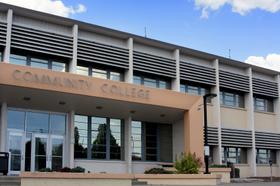For many Americans, withdrawing from high school before graduation leads to several closed doors. Without a high school degree, most Americans have traditionally been unable to pursue higher forms of education and obtain certain jobs. The bottom line is, to make a decent living, a high school diploma or equivalency and some college coursework are necessary.
Fortunately, community colleges across the country are striving to provide more programs to cater to the needs of non-high school graduates. Upon earning one’s GED, students can enroll in community college to pursue a variety of career and college degree opportunities. In some cases, both a GED and a college degree can be sought simultaneously.
The Short Path Without College
According to the National Center for Education Statistics, individuals who have not earned their high school degree stand to earn far less than individuals who have earned their high school diploma, associate’s degree, bachelor’s degree, or other advanced degrees or training. In fact, statistics show that high school graduates make, on average, over $7,000 more per year than workers who did not complete high school. Additionally, workers with an associate’s degree make about $7,000 more annually than those with a high school diploma. With reduced wages, pay, and benefits, individuals who do not graduate from high school are at a considerable economic and social disadvantage.
This video offers tips on preparing for the GED.





















